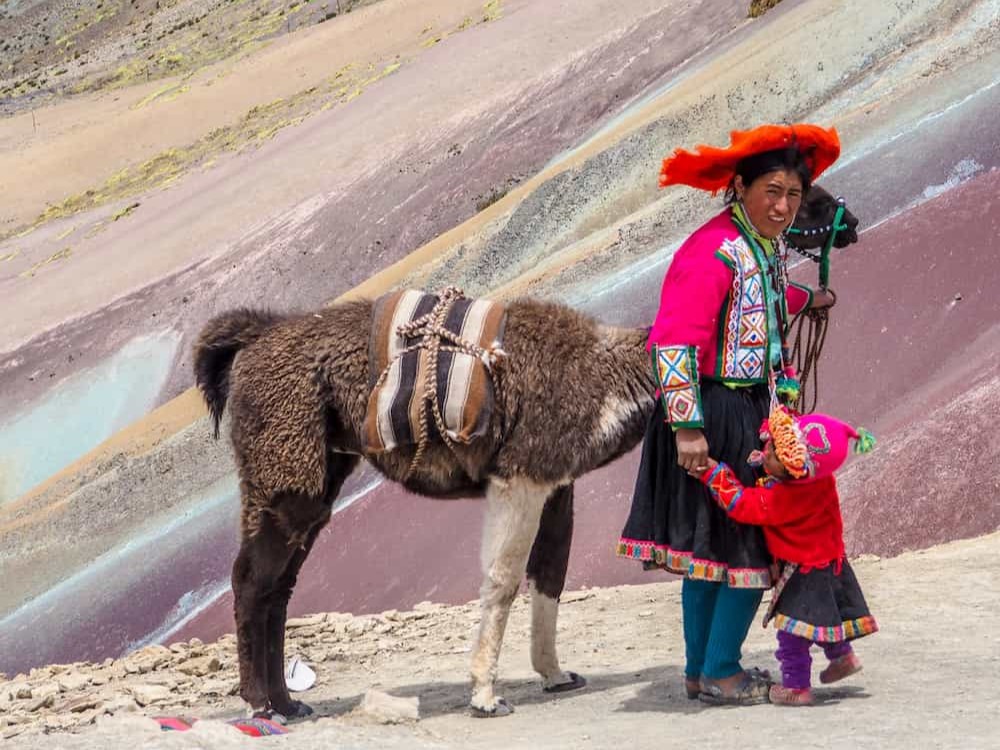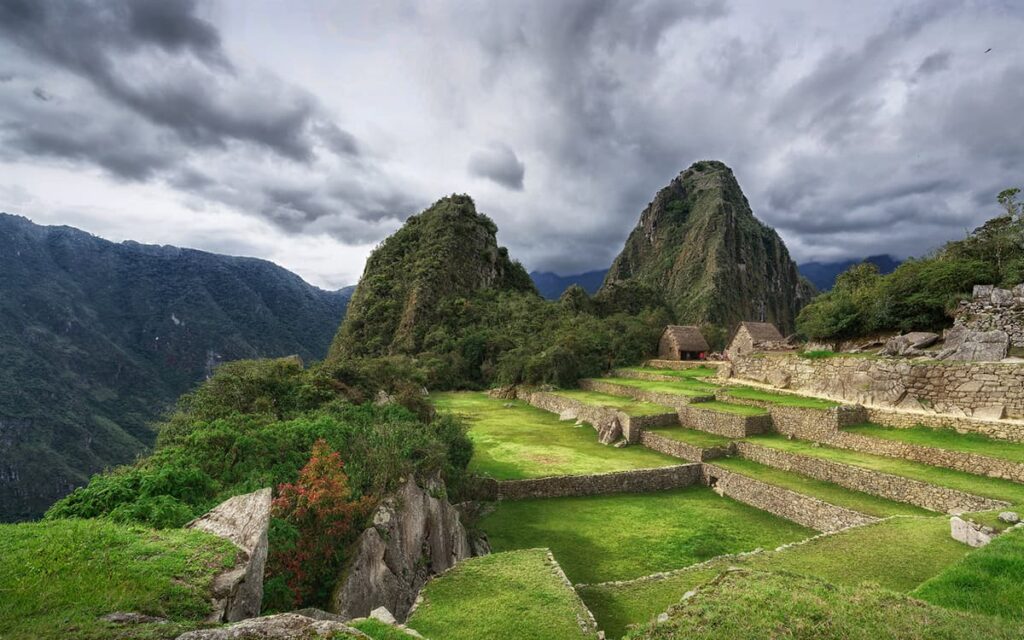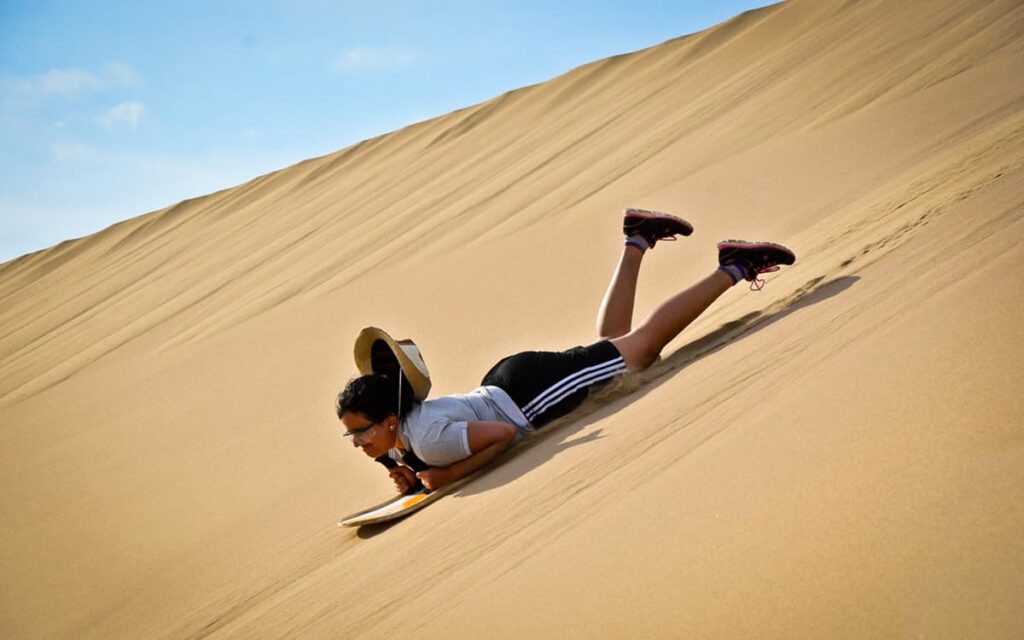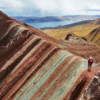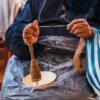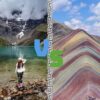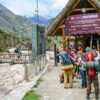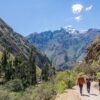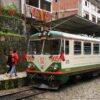An overflowing Andean vegetation surrounds one of the deepest canyons in the world: the Colca Canyon, the perfect setting for both extreme sports and the most peaceful rest, all under the watchful eye of the king of these heavens, the condor.
Viewpoints and hot springs; canoeing, mountaineering or trekking; Sighting of the condor and other typical animals of the mountains in their natural habitat such as the alpaca, the vizcacha or the puma, is what this valley with its privileged climate offers.
The Colca Canyon is one of those places in Peru that contains everything. If you visit Perú, also we recommend you to hike to rainbow mountain peru, and hike the inca trail to machu picchu.
Location:
Located to the northeast of the Arequipa region at about 3,600 m.a.s.l., very close to the Ampato and Sabancaya volcanoes, is the Colca Canyon, considered one of the deepest in the world, reaching approximately 4,160 meters deep. With an Andean vegetation privileged by its climate, this impressive valley belongs to the province of Caylloma.
Altitude of Colca Canyon:
The altitude of Colca Canyon is 3 651 ms. n. m.
To reach this valley, you have to climb to 4,350 meters above sea level and then descend to 3,400 meters above sea level. In the descent you can see landscapes with snow-capped mountains and platforms.
From the Mirador de la Cruz del Cóndor, visitors can enjoy the flight of this majestic bird in danger of extinction that inhabits the canyon. Its varied fauna will allow the traveler to also enjoy the presence of animals such as the alpaca, vicuña, vizcachas, foxes, pumas, eagles, hawks, owls, among others. In addition, Arequipa’s biodiversity is so extensive that it allows you to see the field poppy, the ichu, the tolar, the yareta, the quiñoa and other herbs.
In the Colca Canyon, the tourist will have the possibility of practicing extreme sports such as boating, mountaineering, mountain climbing, fishing, trekking, among others. This canyon belongs to the Colca Valley, a wide agricultural place that has viewpoints to enjoy the landscape and still maintains its ancestral customs by the Collaguas settlers, ancient inhabitants of the area.
Weather
The Climate of the Colca Valley is characteristic of the high Andean areas. From mid-April to mid-November, temperatures usually drop below zero at night and reach 15-20 ° C during the day. During the rainy season, from the end of November to the end of March, the changes in temperature are not so radical because the cloudy sky prevents the sun’s rays from penetrating during the day. Temperatures at this time of year vary between 5 ° and 10 ° C.
Fauna
Despite the extreme conditions that occur in this area, we find a diverse flora made up of about 300 species, of which some are used as medicinals, others as fuels (firewood), others as dyes, and others as nutritious food for the domesticated cattle and wild animals such as the vicuña and the guanaco.
Flora
Since the Colca Canyon is a large area, in addition the most parts are located over 2300 m.s.n.m. and the highest part approximately over 5000m.s.n.m., is a place that houses an immense variety of biomes.
Descending towards the inter-Andean Valley we will notice that the vegetation is denser and more diverse due to the conditions offered by the valley. In some streams some trees can still be seen, since previously these were extensive keuña forests and also in some isolated parts a stand of puya can be found.
Condors in Colca Canyon
The true objective of reaching this far will undoubtedly be to see the condors glide over the sensational Colca Canyon in which, in this corner of the valley, the land splits in two, giving rise to one of the deepest gorges on the planet.
Although these condors in Colca Canyon can be seen throughout the valley, you will inevitably have to head towards what is known as Cruz del Cóndor to live the experience in its best setting. On the way, the powerful landscapes of the canyon shore will be left behind and the views of the river that makes its way through the crevice, cultivation terraces or platforms with more than a thousand years behind them and even hanging tombs also of pre-Columbian civilizations. But once in this natural viewpoint, the condors become the absolute protagonists.
Owners and lords of the Colca Canyon, these birds that weigh up to fifteen kilos and exceed three meters in wingspan with outstretched wings use the thermal currents that fly over this tremendous ravine to rise in perfect glide over the reddish walls, of more than 3,000 meters to the vertical, in which they have their nests.
It is above all at the Cruz del Cóndor viewpoint where, either from early in the morning or at dusk, visitors gather to wait for one of the condors to come into action and then be amazed and excited by the majesty of its flight in such an environment. The miracle, however, can be performed at any time and, although rare, this mysterious and elusive Andean flier from time to time seems to appear by surprise, probably patrolling in search of food, in the least expected place. It’s just a matter of luck, and knowing how to wait patiently.
Attractions
Cruz del Cóndor viewpoint
It is a privileged place to observe the depth of the canyon, the vegetation and above all, the flight of the condors, the most representative bird in the region. This viewpoint is a natural spectacle and an interesting experience for the visitor. It is located at 3,287 meters above sea level. A large cross and a small stone wall have been built for the convenience of tourists. The sighting of the condor is generally done from 10 to 12 noon.
Colca Window
It is a geological formation located at 4,300 m.a.s.l. which, due to wind and pluvial erosion, has taken the form of a window. From this natural viewpoint you can clearly see the entrance road to the Colca valley (from the upper part), and the confluence of the La Pulpera and Colca rivers.
Valley of the Volcanoes
Located at an altitude of 3 587 m.a.s.l. the Valley of the Volcanoes was the center of thunderous convulsions of the Volcanic Mountain Range. As a result, we can observe that it sits on an extension of volcanic lava on which around 86 small extinct volcanoes have sprung up, which are like blisters emerged by the degassing of the lava itself or as a product of direct eruptions from the magma; its altitude reaches up to 300 meters, and it is approximately two hundred thousand years old, presumably as a consequence of one or two eruptions of the Coropuna volcano, and other similar ones already destroyed.
Tapay viewpoint
It is a natural observation point located on the left bank of the Colca River, at an approximate height of 3,600 m.a.s.l. From this place you can appreciate the depth of the Colca Canyon, as well as the Cordillera del Chila, and the archaeological sites of Kakatapuy, Otupara and Kosñirhua. You can also distinguish the town of Tapay, and its annexes or smaller towns.
Villages of the Valley
Throughout the valley there are almost a score of villages and settlers who preserve, more than in any other region of the country, traces of the ethnic wealth of their past. The main ones are Chivay, Cabanaconde. Huambo. Maca, -Achoma, Yunque, Lari and Coporaque. They are deeply religious peoples whose strong Catholic faith also keeps pre-Hispanic elements alive. Each town has its own church, the repository of Hispanic heritage and an exemplary manifestation of architectural sobriety and purity based on ashlar stone, of volcanic origin.
Visiting Peru is undoubtedly the most wonderful experience, the Colca Canyon is one of these surprising attractions to do and there are different tours within the vast national territory, And in Inka Trail Backpacker, we are a company dedicated to making your trip the most pleasant and comfortable since together with our trained professionals we will advise you at all times, always guaranteeing your satisfaction, comfort and security before our service.
Prices only for the Tourist Ticket to enter Colca
- Foreigner S / 70.00 soles per person
- Latin American tourist S / 40.00 soles per person
- National tourist S / 20.00 soles per person
- Foreign student (5 – 12 years old) S / 20.00 soles per person
- National student S / 5.00 soles per person
- Entrance to La Calera thermal baths S / 15.00 per person (optional visit).

